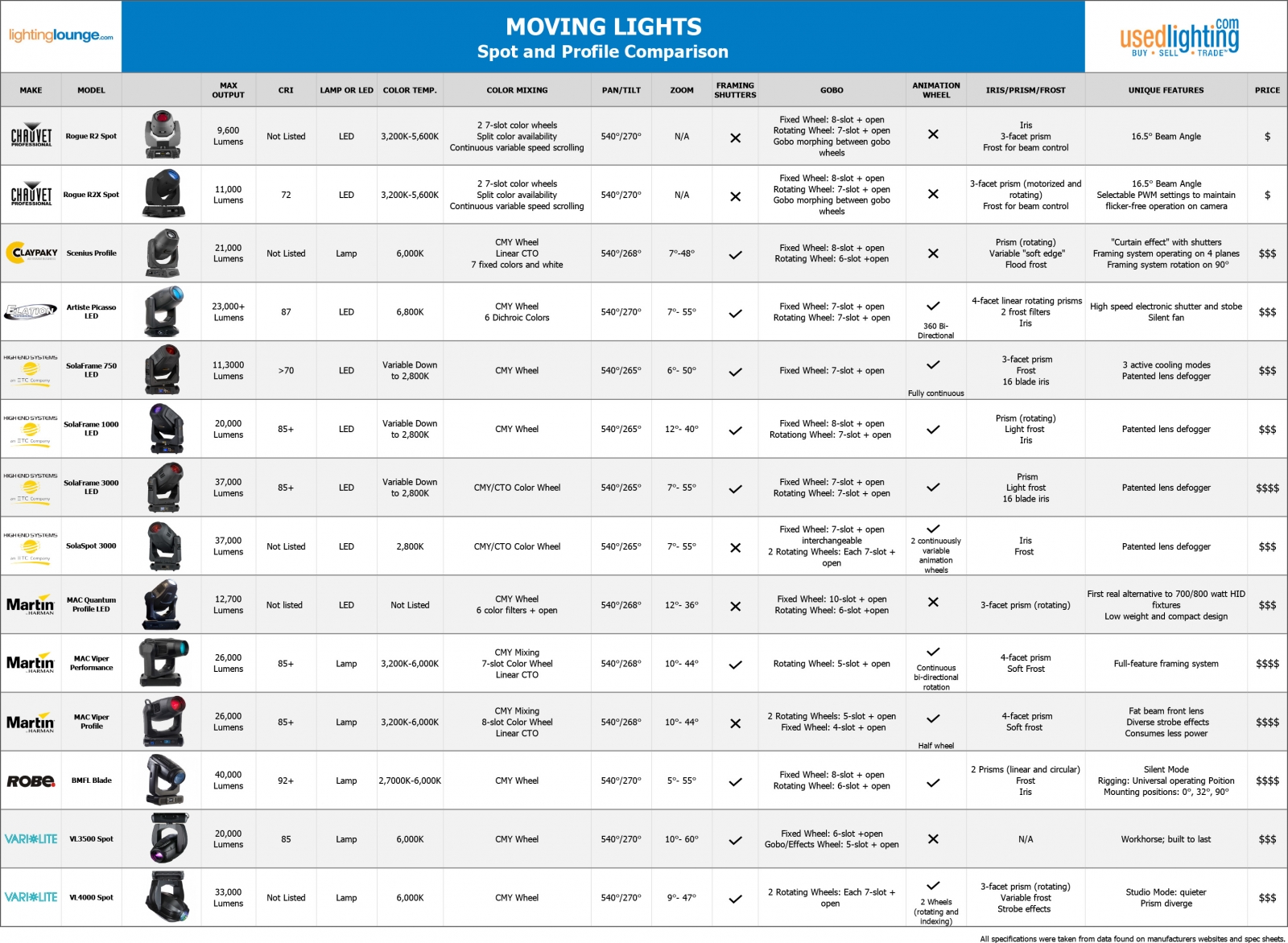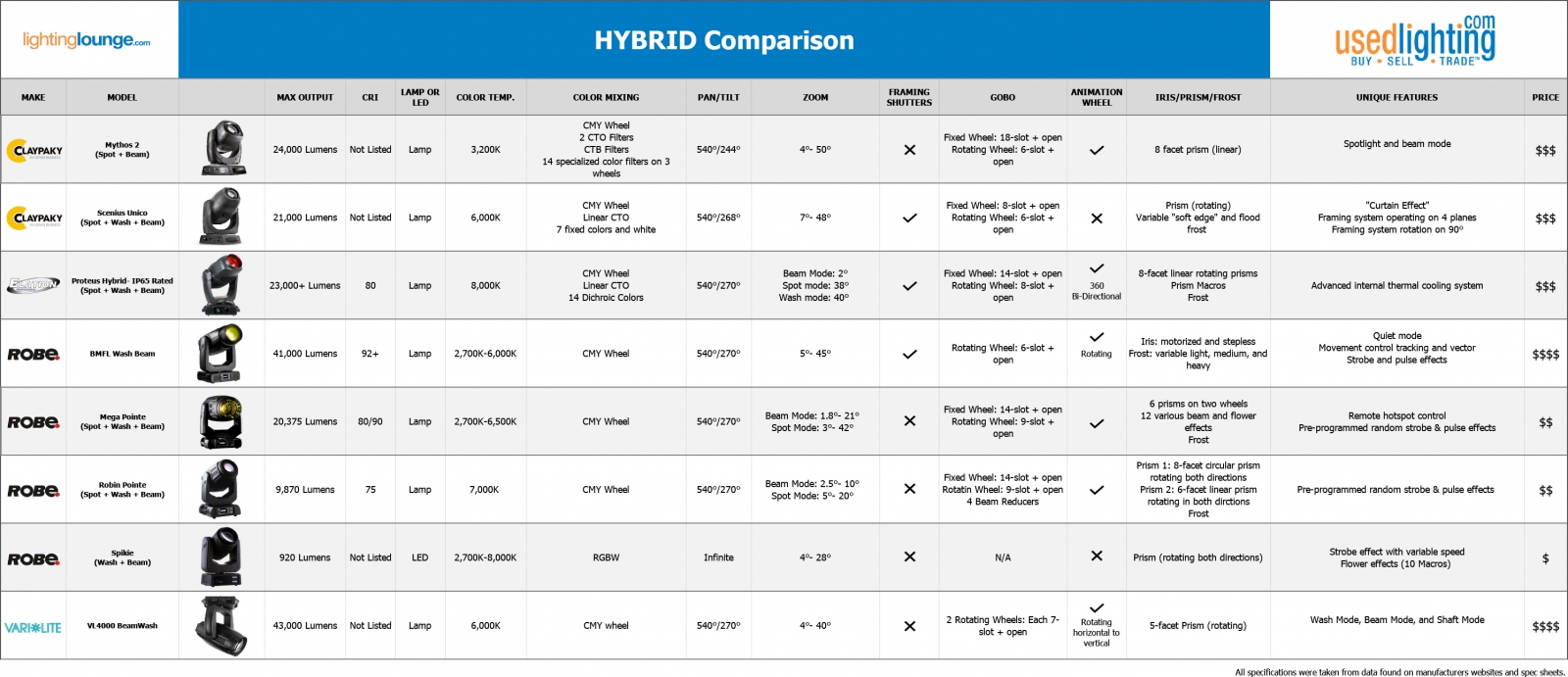A GUIDE TO MOVING LIGHTS
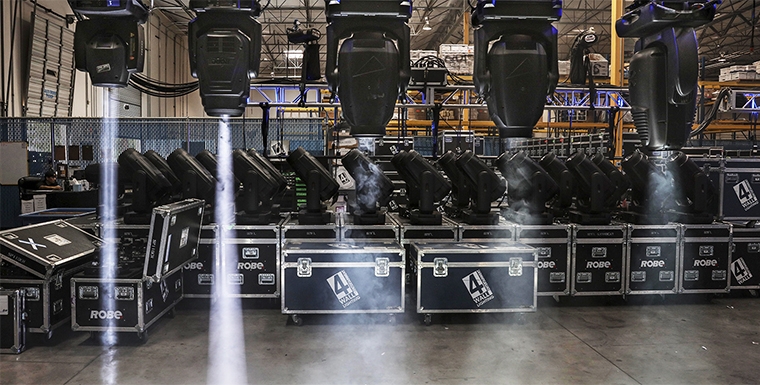
Today, 4Wall Summer Interns Brittney Price and Madison Dahl join us in the Lighting Lounge! This summer, they were given access to 4Wall's entire moving light inventory. We tasked them with creating a fundamental guide to moving lights for those wanting more information on the many different movers that are available. They researched each fixture that was available to them and broke them down into 5 categories: EFX, Spot/Profile, Wash, Beam, and Hybrid. At the end of the article, you can check out detailed comparison charts for each category. From lumen output to price, the charts give you an easy way to determine which moving light will work best for your event or show.
WHAT IS IT BEING USED FOR?
So, you're looking into renting or buying a moving light fixture, but don't know where to start. We know there are lots of different types, brands and price points of moving lights but before looking at that let's get down to the basics of it all: What you are using it for and where?
LIVE EVENTS
 Moving lights are standard in the live event industry, including concerts, music festivals, night clubs, and even in churches. To start off, you'll want to look at the size of your venue, which will have a direct impact on the throw distance. Therefore, the light output that you will need from the fixture will vary depending on venue size. Next, it's important to look at what level of durability you need from your fixtures, paying special attention to the length of the production and how often it changes venues. Finally, effects are important when creating looks for your events. Do you want looks that are very flashy or something a little simpler? All things to think about when looking into renting or buying moving lights for live events. (Photo: Dispatch Tour 2018 - LD Marc Janowitz)
Moving lights are standard in the live event industry, including concerts, music festivals, night clubs, and even in churches. To start off, you'll want to look at the size of your venue, which will have a direct impact on the throw distance. Therefore, the light output that you will need from the fixture will vary depending on venue size. Next, it's important to look at what level of durability you need from your fixtures, paying special attention to the length of the production and how often it changes venues. Finally, effects are important when creating looks for your events. Do you want looks that are very flashy or something a little simpler? All things to think about when looking into renting or buying moving lights for live events. (Photo: Dispatch Tour 2018 - LD Marc Janowitz)
THEATRE
 Theatre companies like to own and use movers for their ability to be diverse. This presents different challenges and expectations when using a moving light. Different features can give you a variety of tools to create the perfect moment on stage. For example, gobo wheels and animation wheels can give you a variety of textures for your stage wash or scenic elements. Framing shutters give the ability to design with precision. Also, looking at the Color Rending Index (CRI) value is important when using with incandescent and other intelligent fixtures. (Photo: Prince of Egypt - LD Mike Billings)
Theatre companies like to own and use movers for their ability to be diverse. This presents different challenges and expectations when using a moving light. Different features can give you a variety of tools to create the perfect moment on stage. For example, gobo wheels and animation wheels can give you a variety of textures for your stage wash or scenic elements. Framing shutters give the ability to design with precision. Also, looking at the Color Rending Index (CRI) value is important when using with incandescent and other intelligent fixtures. (Photo: Prince of Egypt - LD Mike Billings)
 TELEVISION
TELEVISION
In the world of film and television, an important thing to give special attention to is the CRI. Your main priority is making the people on camera look good and the color temperature directly affects the way skin tones look on camera. When you consider that your audience is looking at your design through the lens of a camera, the color temperature is important when trying to balance white. (Photo: 2019 Democratic Debate - LDs Steve Brill, Niel Galen, and Anna Jones)
INDOOR/OUTDOOR INSTALLATIONS
Lastly, we wanted to look at the use of moving lights in indoor and outdoor installations. A few important factors to consider are will it be an indoor or outdoor installation? If the fixtures will be used outdoors or in wet environments, you will at the very least need to have IP65 rated fixtures. Also, when installing fixtures in a building you need to consider how much power you have. LED fixtures pull less power than lamped fixtures, but they may not be as bright. These are all questions that need to be considered for architectural installations. (Photo: NightGarden at the Fairchild Garden - LD Chris Werner)
Of course, there are so many ways and places that you could use moving lights, but these were just a few to get you thinking about what you want from your light.
CLASSIFYING MOVING LIGHTS
Some ways to narrow down your search is to look at fixture type, manufacturer, lamp vs. LED and price point.
There are three main categories of moving lights that manufactures make, they are wash, beam, and spot/profile. Of the three, beam fixtures have the narrowest beam angle, while the spot/profile and the wash are generally the same. The spot/profile fixtures are able to have a sharp edge while wash fixtures will always have a soft edge.
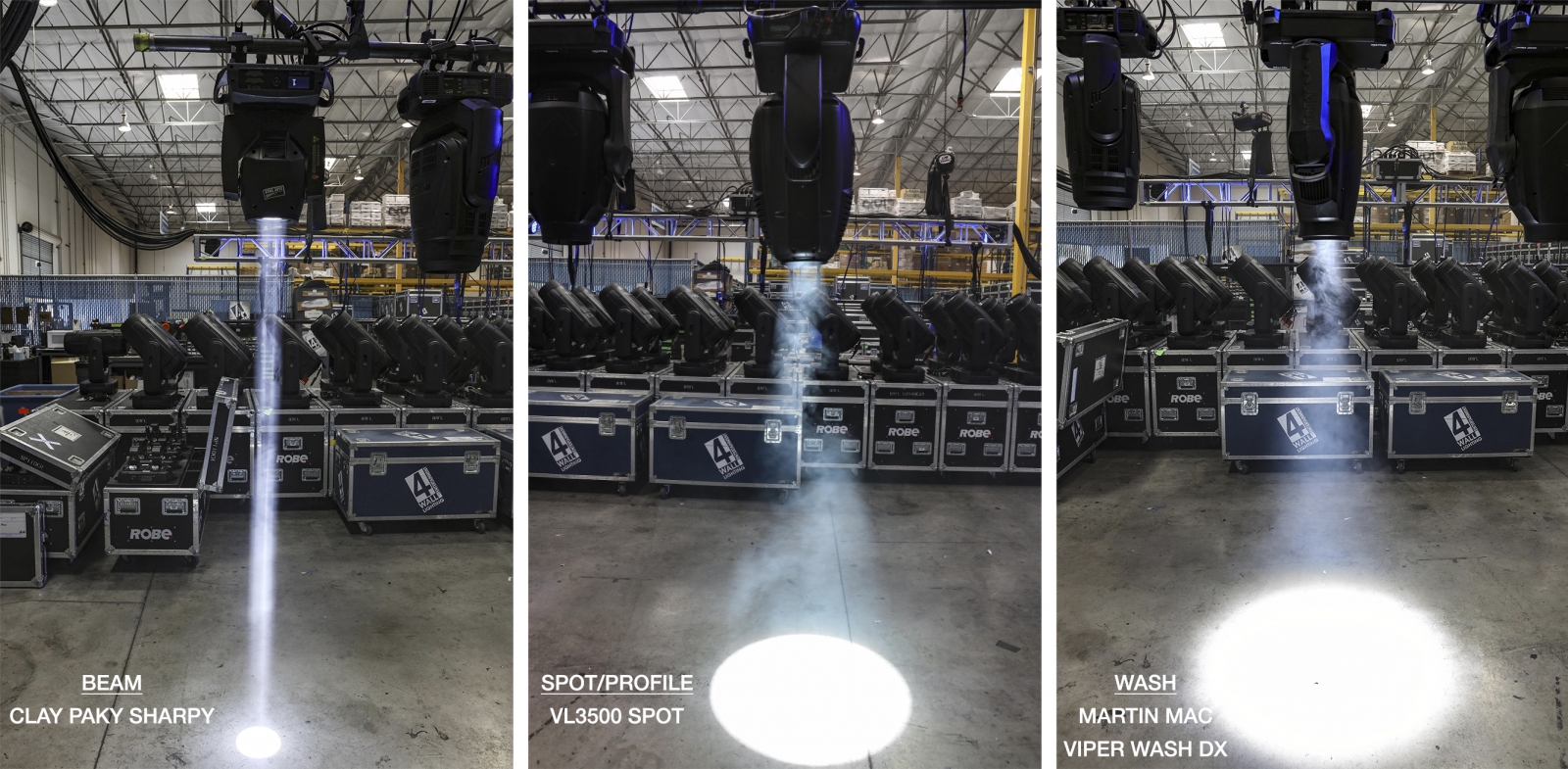
Spot: Normally has a sharper edge than a wash and will come with 1 or 2 gobo wheels, an iris, and most will have an animation wheel. Typical uses include: highlighting specific objects, follow-spots, or general texture over spaces.
Profile: The difference between a spot and a profile is usually based on the manufacturer's naming convention. Generally, the profile has the same qualities and uses as a spot but will give up the extra gobo wheel in favor of framing shutters.
Beam: Produces a laser-like thin beam of light through the air. Typically used in live events for their non-tapered, unique beam.
Wash: Has a soft edge and do not come with the precise beam control options that your spot or beam have. They typically are used when needing to light a large area.
Hybrid: This light includes a mix of different styles of beam, wash, and spot/profile. With its design to be a multipurpose light, it won't be the strongest spot, wash, or beam fixture when compared to a fixture that has one primary function.
Effects: There are many different types of effect lighting fixtures, but for the purposes of this article, we categorized them by their ability to have individual pixel control, 360° pan and/or tilt, or unique built-in effects. They are usually used when you want to see the fixture itself as opposed to its output.
In our comparison charts below, we breakdown feature and specs of moving lights from the following manufacturers: Ayrton, Chauvet, Clay Paky, Elation, GLP, High End, Martin, ROBE, & Vari*Lite. There will be a mix of both lamped fixtures and LEDs as well as a variety of price points. Click each photo to open a PDF version of our comparison charts.
GLOSSARY
- CMY: Cyan, Magenta, Yellow
- CTO: Color Temp Orange
- CTB: Color Temp Blue
- RGB: Red, Green Blue
- RGBW: Red, Green, Blue, White
- RGBA: Red, Green, Blue, Amber
- CRI: Color Rendering Index, a scale of 0 to 100 indicating how accurate a given light source is at rendering color when compared to a reference light source
- EMS: Electronic Motion Stabilizer system
- IP RATING: Ingress Protection, an international code used to define the levels of sealing effectiveness of electrical enclosures against the intrusion of foreign bodies such as dirt and water (for more information visit Lighting Lounge's IP Rating Explained)
- PIXEL MAPPING: the use of software to map and replay media such as bitmaps or video on an array of lighting fixtures or on pixels within the fixtures themselves
ABOUT THE AUTHORS
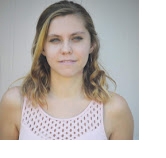 Brittney Price was an intern with 4Wall in the summer of 2019. She is original from Radford, Virginia where she obtained her undergraduate degree in Theatre from Radford University. She is currently a graduate student at UNLV getting her master's degree in Theatre with a contention in Lighting Design and Technology. In the future, she is looking forward to continuing in the lighting industry in whatever way it may lead her.
Brittney Price was an intern with 4Wall in the summer of 2019. She is original from Radford, Virginia where she obtained her undergraduate degree in Theatre from Radford University. She is currently a graduate student at UNLV getting her master's degree in Theatre with a contention in Lighting Design and Technology. In the future, she is looking forward to continuing in the lighting industry in whatever way it may lead her.
 Madison Dahl was an intern at 4Wall Entertainment in Las Vegas, NV for the summer of 2019. She is currently attending Emerson College in Boston, MA where she will receive her BFA in Theatre Design/Technology in 2020.
Madison Dahl was an intern at 4Wall Entertainment in Las Vegas, NV for the summer of 2019. She is currently attending Emerson College in Boston, MA where she will receive her BFA in Theatre Design/Technology in 2020.



